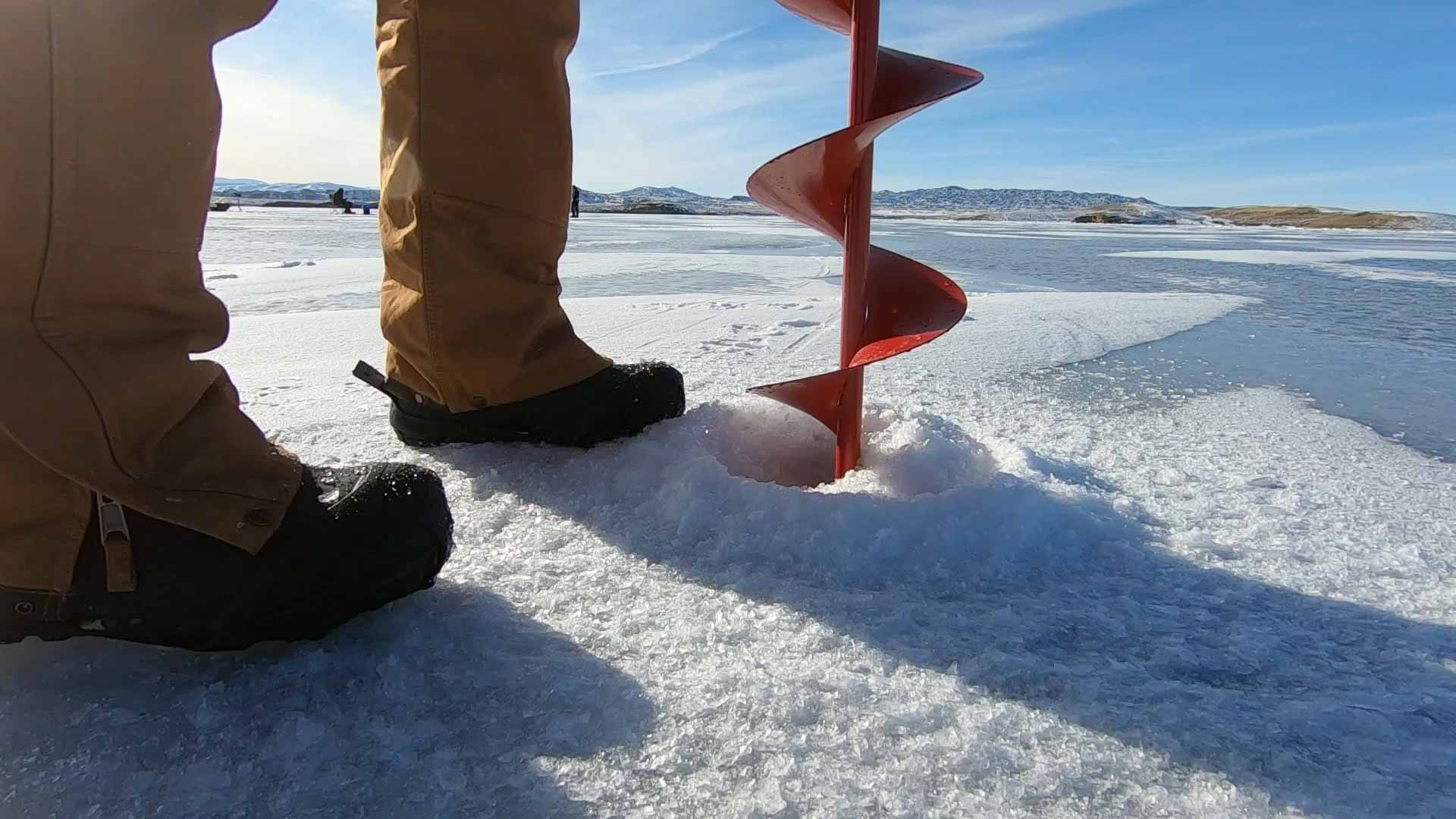Tips to decrease impacts to fish when catch-and-release ice fishing
Salt Lake City — Winter weather has descended on Utah, and if you are planning to go ice fishing this winter and want to release the fish you catch, the Utah Division of Wildlife Resources is offering some tips to help decrease stress and increase survival for the fish.
Minimize the air exposure time for the fish
Just like hot temperatures and warm water can have impacts on certain fish species, freezing weather can also be tough on fish.
Anglers have to remember that even though they are ice fishing, the fish they are catching are living in water that is not frozen — which means that the water temperature that the fish are experiencing is often warmer than the temperatures they are exposed to coming out of the water.
"If an angler is fishing on a particularly cold day, pulling a fish up through a hole and exposing them to freezing conditions can be stressful to a fish," DWR Sportfish Coordinator Randy Oplinger said. "The water that remains on sensitive areas — such as the gills or eyes — can begin to freeze and this can cause damage to a fish. So, it is best to minimize exposure time and to release the fish as quickly as possible after catching it."
One way to eliminate the air exposure time is to make sure you have quick access to all the tools you will need to easily and quickly release the fish.
"A unique aspect of ice fishing is that anglers tend to dress in layers to keep warm, which is definitely recommended," Oplinger said. "However, they often bury key equipment, such as pliers and cameras, under those layers. Another key aspect of ice fishing is that anglers often fish with two holes that are somewhat separated from each other. This makes it easy to forget key equipment for releasing the fish when you head to another hole in response to a strike. What you don't want to do is increase air exposure time for the fish because you are scrambling to find equipment. Anglers should carry the equipment that they need to release their fish in an easily accessible location."
One idea for doing that is to keep your pliers on a lanyard around your neck to make them easy to find and access. Another idea is to keep all your equipment in a bucket or sled so that it's easy to find and doesn't get buried in the snow on top of the ice.
Eliminate contact with dry surfaces
Wearing gloves while ice fishing is typically recommended to protect an angler's hands from freezing conditions. Those gloves, however, are often made of absorptive fabric. Fish have a protective slime coat on their skin, and wearing gloves while handling the fish can remove the slime coat.
"That can leave fish more susceptible to various skin issues, such as fungal diseases," Oplinger said. "I know that it is tough to take gloves off while ice fishing because it's cold, but handling fish with your bare hands is best. Once the fish have been safely released, then you can put your gloves back on."
Safety tips for anglers
While it is important to decrease stress on the fish while ice fishing, it is also very important to keep yourself safe as well. It's important to dress in layers and have all the needed equipment to stay warm.
A general safety recommendation is to not step on the ice unless it is at least 4 inches thick. Keep in mind, though, that ice thickness can vary across a lake. If you see the ice is 4 inches thick in one spot, don't assume it's 4 inches thick across the entire lake. Be sure to drill test holes into the ice as you venture onto it. You should also avoid putting large groups of people and equipment in a small area — spread the weight out.
"As an extra precaution, you can also purchase ice safety picks, which can help you get out of a lake if you fall through the ice," Oplinger said. "I'd also recommend taking a rope with you. It's always a good idea to have someone else with you when ice fishing."
Find more ice safety tips on the Utah State Parks website.
You can find more information about where to go ice fishing in Utah on the DWR Fish Utah map. Also, be sure to rate the waterbodies that you fish this winter on the website. The ratings allow DWR fisheries managers to gauge angler satisfaction at a specific waterbody. That information helps the DWR improve fishing across the state.

















